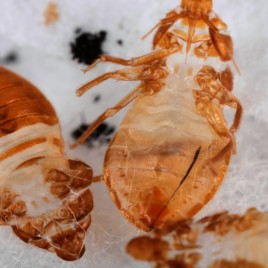By analysing and sequencing the genome of the bed bug, Cimex lectularius, researchers have identified genes associated with insecticide resistance. Over the last 20 years the bed bug has developed abilities which limit the effectiveness of insecticides. Researchers hope their findings will help uncover mechanisms of insecticide resistance. The bugs have certain proteins in their […]
Tag: biodiversity
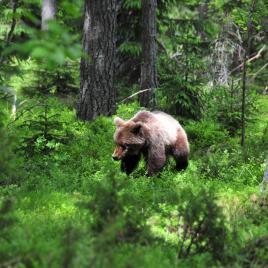
How bears gain weight without getting obese
Bears eat intensively to put on weight for winter hibernation but don’t seem to suffer the negative health effects of obesity, thanks to the microbiota in their digestive tract. By analyzing fecal samples researchers found the microbiota in a bear’s digestive tract changes when the bear is preparing for hibernation. The researchers believe some of […]
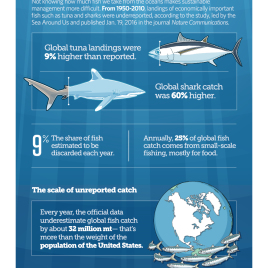
Underestimating global fisheries catches
Researchers have been substantially underestimating the total global fisheries’ catches by as much as 50 per cent, according to a new study. The results are based on “catch-reconstruction”, using scientific literature and asking local experts to help provide missing data. The researchers found increases in catches every year from 1950 to 1996, at which […]
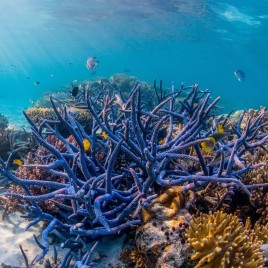
Marine protected areas failing to protect history
Marine protected areas (MPAs) are failing to protect the evolutionary diversity of fish and corals, according to a new study. The researchers conclude that over 7,000 million years of the evolutionary history of corals and 3,586 million years of fish evolution is not protected. Researchers studied 450 species of fish, which represent important components of marine biodiversity, and hundreds of species of coral, and calculated how […]
Cheetahs’ genome give glimpse into their history, adaptation and survival
Genetic analysis has uncovered new details about the history, adaptation and survival of the world’s fastest land animal, the cheetah. The cheetah is descended from a relative of the American puma, and 100,000 years ago could be found across the Americas before moving into Asia and Europe. The results of the genomic analysis have pinpointed […]
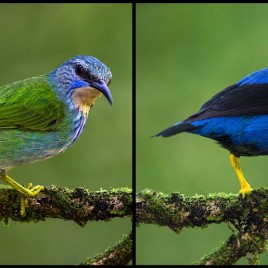
Male songbirds aren’t colourful, females are just drab
The colour differences seen in the plumage of male and female songbirds is mostly from to the effects of sexual selection upon the female, not the male, according to a new analysis. This challenges the long-held view that males developed more colourful plumage because of sexual selection. Researchers quantified the colouration of nearly 6,000 species […]
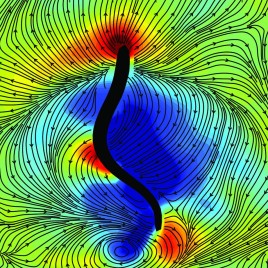
What we can learn from jellyfish
Jellyfish and lamprey eels have some of the lowest energy costs for swimming of any animal, and now scientists have figured out how they do it. Fish, humans, and boats move forward by propelling water backwards thereby generating thrust. Jellyfish and eels however are able to generate low pressure regions that help pull them through the […]
Transmitting resistance to malaria
Drug-resistant malaria parasites, which have so far emerged only in Southeast Asia, can infect species of mosquitoes found in Africa, according to a new study. If the drug-resistant parasites spread to the African mosquito species it could potentially damage global efforts to eradicate malaria, according to the authors. However further research is required to determine […]
How the Emperor stays warm: Secrets of the emperor penguin
Researchers have discovered how the emperor penguin withstands the cold temperatures of Antarctica. The secret is in their down, and a specific type of feather called the plumule. The plumule, one of four types of feathers on a penguin, has previously been overlooked as an important part of the insulation. Studying three emperor penguins, researchers […]
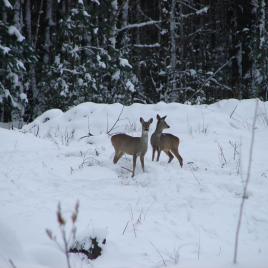
The Nature of Chernobyl
At the site of the Chernobyl disaster, animals are thriving, according to findings from a long-term census. Researchers found populations of native wildlife, such as elk, deer, boars, and wolves, have bounced back, reaching a population size similar to nearby nature reserves. The researchers note that this growth in population occurred at a time when […]
Common molecular toolkit shared across the Tree of Life
The assembly instructions for nearly 1,000 protein complexes shared by most kinds of animals have been revealed, offering a new tool for studying the causes of diseases like Alzheimer’s and different cancers. Proteins come together to form complexes, or molecular machines, which are responsible for certain functions in cells. The new research indicates that most […]
Global tree count: Seeing the forest through the trees
There are approximately three trillion trees in the world, according to density estimates of every continent except Antarctica, a number much larger than previous estimates of just over 400 billion trees. However their research also estimates that humans have cut down 46 per cent of the world’s trees since the beginning of human civilization. The […]
Weather impacts on insect gender
The gender of certain insects can be determined by the weather, and therefore influenced by climate change, according to new research. The authors believe this is the first study to show the effects of weather on insect gender. From 2008 to 2010 Researchers captured newly hatched weevils (Curculio elephas) after they emerged from the soil. […]
A new understanding of pig domestication
Domesticating the pig turns out to be more complicated than we thought. We used to think they were domesticated by isolating small populations and selectively breeding for certain traits, however this does not appear to be the case for pigs. By analyzing the genomes of over 600 domestic pigs and wild boars from Europe and […]
A new “silent spring”
An editorial is calling the dumping of plastic waste into the ocean a new “silent spring”. “Silent spring” was a book written in the 1960s outlining the harmful effects of the overuse of pesticides on the environment. It was instrumental in raising public awareness of the potential dangers of pesticides. The authors of the paper […]
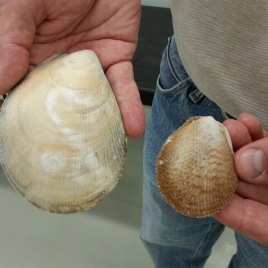
New Giant Clam species discovered off Newfoundland coast
A new species of clam, the giant file clam (Acesta cryptadelphe) was discovered off the coast of Newfoundland. The species was first spotted over 30 years ago, and thanks to DNA analysis it has been confirmed as a new species. The species is so similar to the file clam that the scientists decided to name […]
